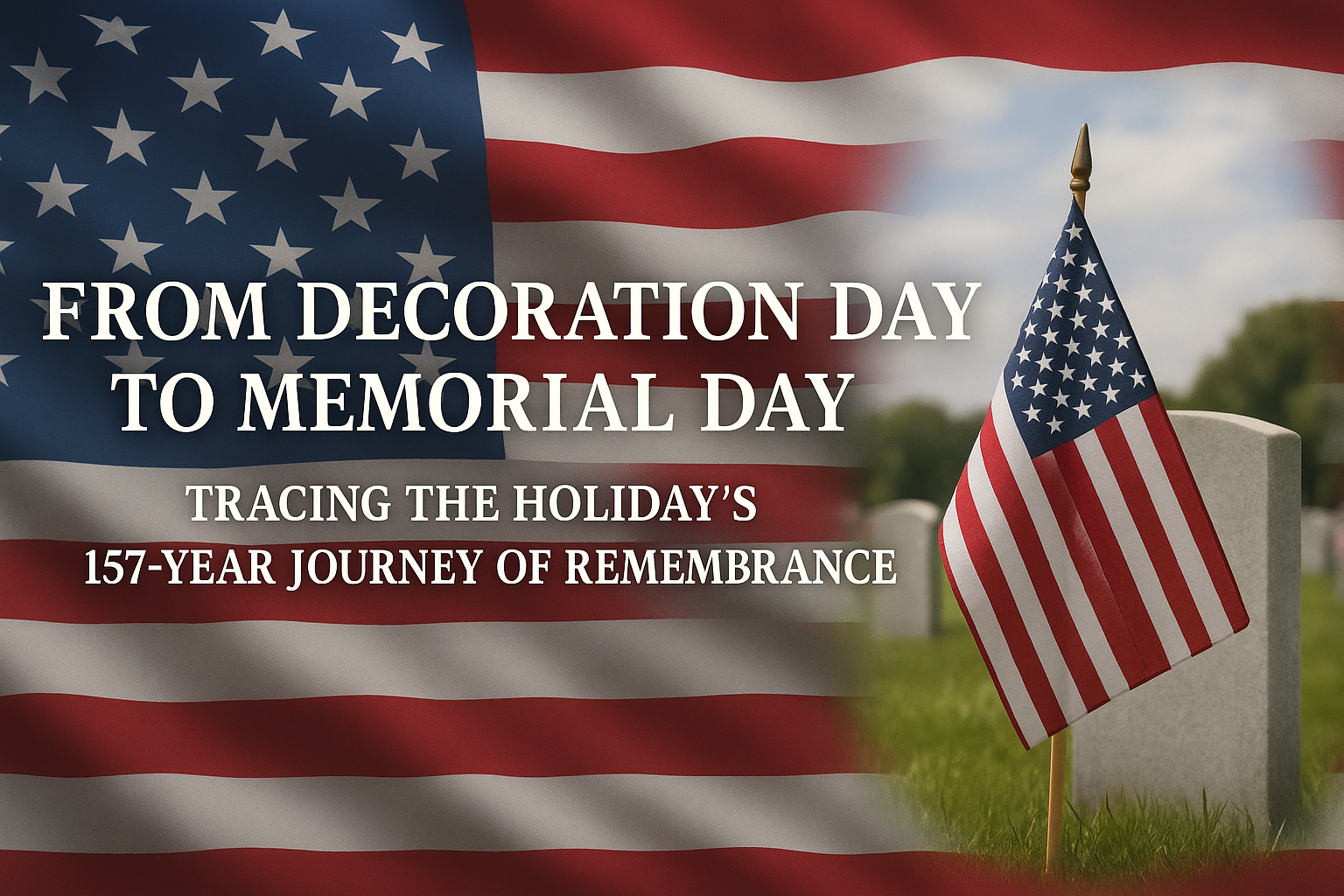WARREN, Ark.— Before it marked the unofficial start of summer, Memorial Day began as a solemn promise written in flowers and silence. In the spring of 1868—just three years after the Civil War’s final shot—Union veterans’ leader Gen. John A. Logan issued General Order No. 11 setting aside May 30 as “Decoration Day,” a time for the nation to lay blossoms on the graves of those who “made their breasts a barricade between their country and its foes.”
Roots Older Than Logan’s Order
Well before Logan’s proclamation, towns North and South were already decorating soldiers’ resting places. One of the earliest large-scale tributes came on May 1, 1865, when newly freed Black Charlestonians reburied and honored Union prisoners of war who had died in a Confederate prison camp. Their procession of thousands, capped by hymn singing and floral tributes, carried both mourning and hope into the Reconstruction era.
In Columbus, Mississippi, and Waterloo, New York, women’s associations likewise honored the fallen during the war’s first anniversaries, sparking friendly disputes over which community “started” the holiday. The federal government ultimately credited Mary Ann Williams of the Ladies Memorial Association of Columbus, Georgia, for popularizing the idea of strewing graves with flowers across the former battle lines.
Expanding the Circle of Honor
Decoration Day was first meant only for Union dead; by the late 19th century, Southern states held their own observances on separate dates. After World War I, however, the tradition broadened to commemorate Americans lost in all conflicts, knitting the nation’s military sacrifices into a single day of reflection.
A Monday Holiday—and a Moment of Silence
Congress transformed Decoration Day into the modern Memorial Day with two key acts:
- The Uniform Monday Holiday Act of 1968 moved observance to the last Monday in May, creating a three-day weekend. The change took effect in 1971.
- The National Moment of Remembrance Act of 2000 encourages all Americans to pause for one minute at 3 p.m. local time each Memorial Day to honor those who gave their lives in service to the country.
Traditions That Endure
From the placing of miniature flags at Arlington National Cemetery to local wreath-layings in Bradley County, customs echo the original call to “decorate” graves. Communities nationwide sound Taps, read honor rolls, and join veterans in prayer. Though barbecues and ballgames now share the date, veterans’ groups continue to remind Americans that the day is set apart not to thank the living—that is for Veterans Day—but to remember the dead.
Why the History Matters
Knowing the holiday’s arc—from war-scarred cemeteries to today’s hometown parades—helps preserve its intent. As you gather with family this Memorial Day, the simplest acts—placing a poppy on a headstone, or standing in respectful silence at 3 p.m.—connect Bradley County to a 157-year-old promise: that those who gave “the last full measure of devotion” will never be forgotten.






